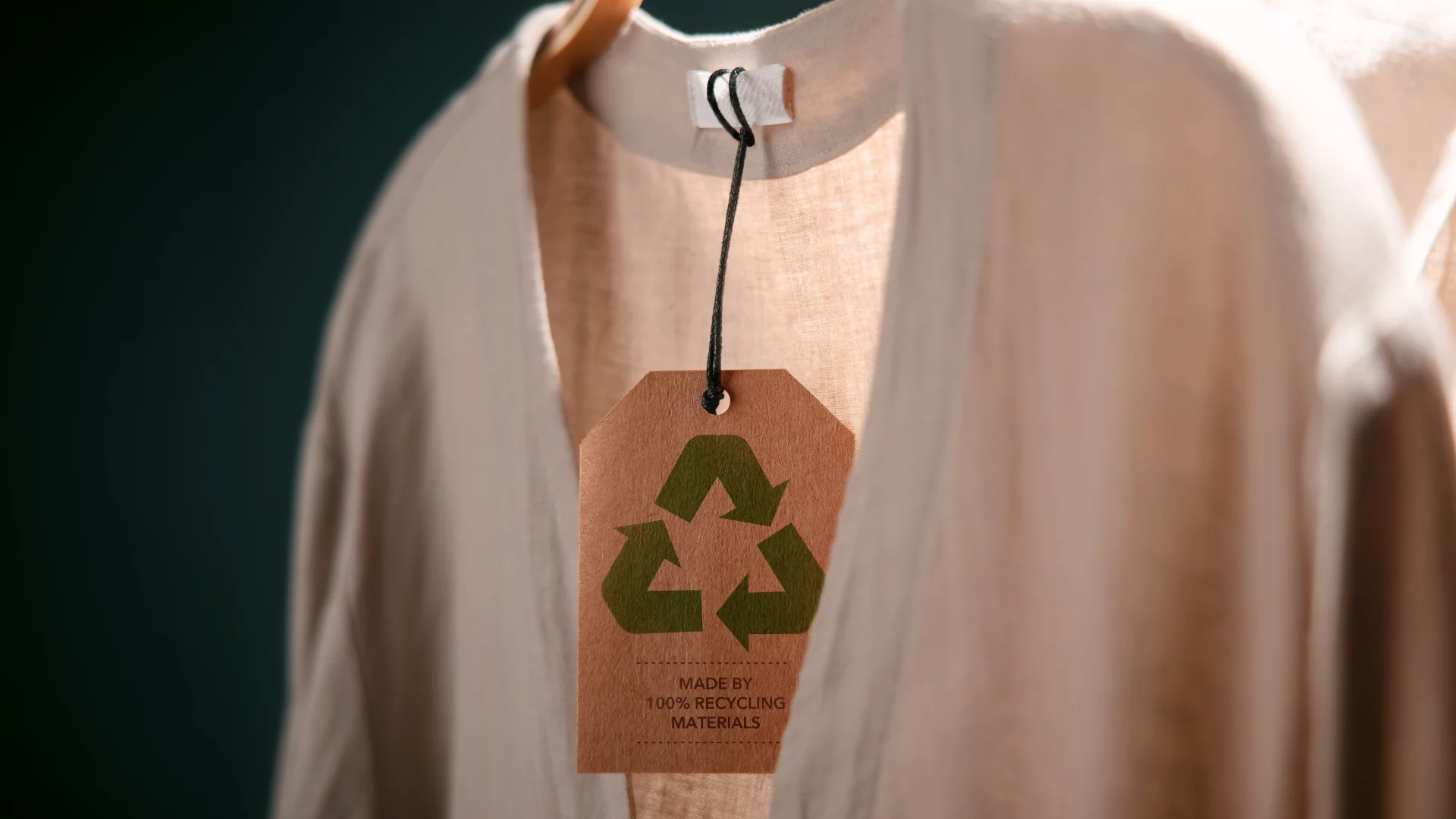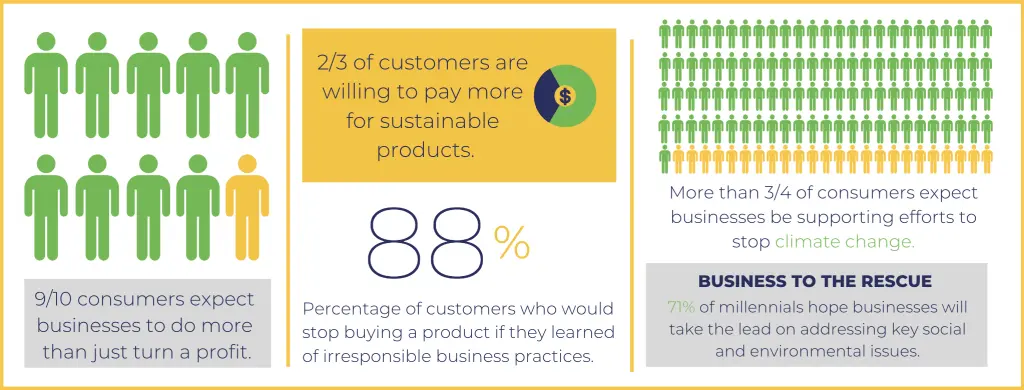Last Updated on June 3, 2024 by Annie Baldwin
Going green can seem daunting.
You may have heard that eco-friendly products cost more than conventional ones but is this reputation deserved?
Let’s take a closer look at whether sustainable goods really hit your wallet harder.
Are Eco-Friendly Products More Expensive?

Yes, environmentally friendly products tend to be more expensive than conventional alternatives.
Eco-friendly products require the use of recycled, natural, or sustainably-sourced materials which are typically more costly.
Brands pass these expenses onto the consumer through higher retail prices. The limited availability and lower production volumes of green products also contribute to inflated costs.
However, prices may fall as demand increases and sustainable manufacturing becomes more mainstream.
While pricier, environmentally conscious products offer added value through social responsibility and lower environmental impact.
Key Points
- Eco-friendly materials like recycled plastic cost more than virgin materials
- Smaller production volumes prevent economies of scale for green brands
- Growing consumer demand for sustainability allows higher price points
Our Opinion
While the upfront cost of sustainable goods is higher, we believe the investment is worthwhile for the environmental benefits.
As consumers increasingly demand greener products, prices should fall.
We recommend buying eco-friendly when possible, especially for items you use frequently or that generate waste.
With growing adoption, sustainable products will hopefully reach cost parity with conventional ones.
Why Are Eco-Friendly Products More Expensive to Produce?

It’s true that eco-friendly products often have higher price tags than traditional versions. This is largely due to extra costs during production and manufacturing. Companies making sustainable goods typically use pricier raw materials.
They also frequently invest in special equipment and facilities to reduce environmental impact. With sustainable products being relatively new, manufacturing processes are less efficient. The lack of economies of scale and high startup costs get passed on to consumers.
Additionally, demand for eco-friendly goods is still building. Lower demand compared to conventional counterparts limits companies’ ability to cut costs through mass production. The good news is that as demand increases over time, prices are likely to decrease.
While the upfront cost can be higher, sustainable products offer long-term financial and environmental savings. Their advanced durability and recyclability save you money on replacements. And reducing waste saves your wallet – and the planet – in the long run.
The price barrier does mean sustainable goods remain out of reach for many lower-income consumers. But as processes improve and demand rises, prices should become more competitive. For now, those who can afford it bear the costs of pioneering a greener future.
Do Sustainable Materials Cost More?
When it comes to materials, going green often requires paying a premium. Organic cotton, c, bamboo, hemp, and other eco-friendly textiles tend to be pricier than mainstream options like polyester. Natural, ethically sourced dyes also cost more than synthetic dyes. The same goes for FSC-certified wood versus regular timber.
Again, this comes down to higher input costs and lower economies of scale. But the price difference reflects important environmental benefits. Organic cotton eliminates pesticide pollution and promotes soil health. Sustainably-harvested wood protects forests and wildlife. Though pricier upfront, these materials avoid hidden environmental costs down the line.
Some eco-materials like recycled plastic actually cost less. Their price reflects reuse rather than new extraction. And as methods like chemical recycling make recycling easier, recycled materials will likely get cheaper. With scale, other eco-materials could also become cost-competitive with conventional counterparts. Consumer demand plays a key role in driving scale and spurring innovation in sustainable materials.
While eco-materials carry higher price tags now, their environmental benefits help justify the cost. And in the long run, scaling sustainable production could make going green much more affordable.
What Makes Green Products Cost More?
Several factors drive up the costs of sustainable and eco-friendly products compared to conventional alternatives:
- Raw materials – Organic cotton, FSC-certified wood, natural dyes, and other green materials are often more expensive than mainstream inputs like regular cotton or timber.
- Specialized equipment – Companies need different machines and tools to handle delicate organic fabrics versus durable synthetic materials. These specialty equipment investments add costs.
- Lower economies of scale – Green products represent a small niche, so manufacturers cannot take advantage of mass production cost savings. As demand increases, prices can come down.
- Third-party certifications – Getting certifications like Fairtrade, Organic, or B Corp takes time and money for audits and paperwork. However, the labels do provide assurance about sustainability claims.
- New technology – Developing innovative green chemistries and production methods requires major upfront R&D investments that get passed to consumers.
- Shorter supply chains – Local and transparent supply chains reduce environmental impacts but eliminate ultra-cheap labor and materials sourcing.
While green costs more now, prices should fall as sustainable production scales up. Cost premiums help account for positive social and ecological benefits that conventional products ignore.
How to Reduce Costs of Eco-Friendly Goods
There are several ways companies can lower prices for environmentally-friendly products over time:
- Economies of scale – As demand grows, manufacturers can increase production volumes and gain efficiencies to reduce costs.
- Process innovation – Investing in R&D to develop less resource-intensive production methods can cut expenses.
- Material substitution – Finding lower-cost sustainable alternatives to expensive inputs like organic cotton can help.
- Supply chain management – Localizing supply chains cuts transportation costs and allows tighter inventory controls.
- Lean manufacturing – Reducing waste in the production process means less raw materials wasted and lower costs.
- Green chemistry – Using plant-based ingredients or bio-based plastics instead of petrochemicals can save on material expenses.
- Consumer engagement – Educating consumers on total lifecycle costs rather than just upfront pricing can change perceptions of value.
- Government incentives – Subsidies, tax breaks, and other policies could promote the scaling of green technologies.
- Corporate partnerships – Collaborations between manufacturers, suppliers, and retailers can find creative ways to take costs out of sustainable goods.
With concerted efforts across companies, governments, and consumers, environmentally friendly products could become far more affordable and accessible.
When Do Green Products Pay For Themselves?

While eco-friendly products often have higher upfront costs, they can pay for themselves over time in several ways:
- Energy-efficient appliances like dishwashers, washing machines, or refrigerators can lead to significant savings on electricity bills over their lifetime.
- Organic cotton clothing or bedding may cost more initially but can be more durable and last longer, saving money from replacing items frequently.
- Electric vehicles like e-scooters have higher sticker prices but lower fuel and maintenance costs compared to gas-powered cars over years of ownership.
- Energy efficient light bulbs are pricier than incandescent bulbs, but use a fraction of the electricity and last years longer.
- Solar panels and home batteries provide clean energy that reduces reliance on grid electricity and pays back installation costs over decades.
- Water-saving fixtures like low-flow showerheads and faucets conserve water and lower utility bills each month.
- Reusable products like glass food containers avoid the need to constantly buy disposable plastic versions that get tossed after one use.
- Buying quality items built to last saves money over cheaply made products that break quickly and must be frequently replaced.
With some upfront investment, green products can save considerable money long-term through efficiency, durability, and reducing waste.
FAQ
Is Eco-Friendly Packaging More Expensive?
Eco-friendly packaging often costs more due to the use of recycled, biodegradable, or compostable materials. These materials tend to be more expensive than conventional plastic or Styrofoam packaging. The higher costs are passed on to consumers.
Do Environmentally Friendly Products Sell Better?
Environmentally conscious consumers are increasingly choosing eco-friendly products, even if they cost more. This growing demand allows green brands to charge premium prices. Many mainstream brands are also developing sustainable product lines to appeal to these buyers.
Is Green Marketing Expensive?
Developing an environmental marketing campaign requires extra resources for research, sourcing eco-friendly materials, certification processes, and branding. These costs mean businesses often charge higher prices for sustainable goods to recoup expenses.
Are Sustainable Products of Higher Quality?
Sustainable products are not necessarily higher quality than conventional ones. Some eco-friendly goods may be of lower quality due to the lack of availability of green materials. However, ethical production and social responsibility can be markers of quality.
Conclusion
Eco-friendly products such as straws, sneakers, garments, and packaging are often more expensive than their conventional counterparts. This is because businesses incur extra costs during production and manufacturing, including the use of pricier raw materials. Sustainable products are still relatively new and not as readily available as traditional products. Lack of demand and high manufacturing costs contribute to their higher price. While sustainable products may have a higher upfront cost, they can save money in the long run. Higher-income consumers are more likely to overlook the higher price tags associated with sustainable goods. Overall, sustainable products offer more environmental and social benefits compared to conventional products.
